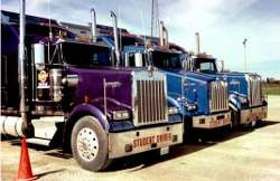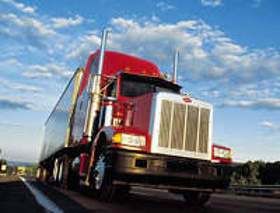Going From B To A
Topic 13472 | Page 1

I am also a Class B driver as well and would also love to hear any inputs on whether we would have an advantage and find it easier to upgrade to a Class A or does having a B not make a difference when upgrading to an A?

I'm pretty sure you still have to take all of the same tests. I'm guessing you would really only need to work on the trailering aspect, hazmat and or air brakes if you don't already have them. Maybe check into possibly taking a refresher type course at a truck driving school to get some practice.
HAZMAT:
Hazardous Materials
Explosive, flammable, poisonous or otherwise potentially dangerous cargo. Large amounts of especially hazardous cargo are required to be placarded under HAZMAT regulations

Going from a Class B to Class A does have a few advantages. For the permit test you will only need to take the combination vehicle portion. You should have already gotten over any fear of driving a large vehicle. You should have a better concept of what it takes to maneuver a larger vehicle and know how to maintain yours and the other motoring vehicles' safety out there after your experience as a professional driver. If you used double clutching in your previous vehicle, that would be a bonus. Finally, when I changed from the permit to the actual Class A license it only cost me $10 while some of my classmates were spending $75 to $150 to get the license. I hope that answered your question. Good luck to you.
Combination Vehicle:
A vehicle with two separate parts - the power unit (tractor) and the trailer. Tractor-trailers are considered combination vehicles.
Double Clutch:
To engage and then disengage the clutch twice for every gear change.
When double clutching you will push in the clutch, take the gearshift out of gear, release the clutch, press the clutch in again, shift the gearshift into the next gear, then release the clutch.
This is done on standard transmissions which do not have synchronizers in them, like those found in almost all Class A trucks.
Double Clutching:
To engage and then disengage the clutch twice for every gear change.
When double clutching you will push in the clutch, take the gearshift out of gear, release the clutch, press the clutch in again, shift the gearshift into the next gear, then release the clutch.
This is done on standard transmissions which do not have synchronizers in them, like those found in almost all Class A trucks.
You would have to take: combination vehicles, then do the skills portion: yard maneuvers (backing, offset, parallel, alley dock), pre-trip & road test.
Additional endorsements (doubles/triples, tanker, hazmat) are written only exams.
That's the how.
If you take the combinations test, you can get your Class A Learners Permit (CLP), and start practicing. If you have TT combinations at your place of employment, you can drive them with a fully licensed Class A in the passenger seat - so you can get your practice in - then go to a testing center to do your skills test. The County VoTech I went to here Florida, is a "3rd Party Testing Center". They will let folks who aren't students in their course, test out (fee is $300), for Class A, Class B, Passenger & School Bus.
If you're planning on seeking OTR Class A employment - your Class B isn't really going to count towards Class A experience. You'll need to either attend a private school, or a go with a company that does training (Prime, Swift, etc.).
Most private schools don't have a"short-cut" for Class-B to A. You would have to do the full course.
Rick
HAZMAT:
Hazardous Materials
Explosive, flammable, poisonous or otherwise potentially dangerous cargo. Large amounts of especially hazardous cargo are required to be placarded under HAZMAT regulations
OTR:
Over The Road
OTR driving normally means you'll be hauling freight to various customers throughout your company's hauling region. It often entails being gone from home for two to three weeks at a time.
Combination Vehicle:
A vehicle with two separate parts - the power unit (tractor) and the trailer. Tractor-trailers are considered combination vehicles.
Doubles:
Refers to pulling two trailers at the same time, otherwise known as "pups" or "pup trailers" because they're only about 28 feet long. However there are some states that allow doubles that are each 48 feet in length.
CLP:
Commercial Learner's Permit
Before getting their CDL, commercial drivers will receive their commercial learner's permit (CLP) upon passing the written portion of the CDL exam. They will not have to retake the written exam to get their CDL.
New Reply:
New! Check out our help videos for a better understanding of our forum features

















Preview:








 TT On Facebook
TT On Facebook
Well today was my first day back in a truck it all came back to me as a second. Nature I have a class B CDL found out today the company. I work for has a dry bulk division better money better hours all local work I just about know all the pretrip brake check backing techniques (how hard would it be to go from class B to class A) I never been to any school all my experience. Is from on the job and on the road..
CDL:
Commercial Driver's License (CDL)
A CDL is required to drive any of the following vehicles: